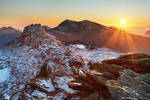ShopDreamUp AI ArtDreamUp
Deviation Actions
Coronavirus, Featured Deviation and EN Issues
:thumb291023577:
Coronavirus
Firstly, Everything-Nikon would like to reiterate the message sent to all deviants by DeviantArt and asks all members of this group to be safe during these unprecedented times if any of you do venture out with camera in hand ... or pocket ... ;)
This was the message all deviants received:
In light of the global impact caused by the coronavirus, the team at DeviantArt encourages you to stay safe and follow all health and safety guidelines put forward by your local government. Remember to take care of yourself, and do your part to safely support those around you. :heart:
For general interest, here's a handful of
telephoto photo maker
:thumb291023577:
Nikon receives the "Red Dot Award: Product Design 2019" in March
TOKYO - Nikon Corporation (Nikon) is pleased to announce that the Nikon Z mount system and the COOLPIX P1000 compact digital camera/DF-M1 Dot Sight have received the "Red Dot Award: Product Design 2019", sponsored by Germany's Design Zentrum Nordrhein Westfalen.
The Red Dot Award: Product Design is a world-class award presented to products released over the past two years that exhibit superiority in terms of a total of nine aspects, including innovation, functionality, ergonomics, ecology, and durability. More than 5,500 entries were submitted for the "Red D
June
:thumb291023577:
Snap up the next update of Snapbridge
Don't fall off your seats going for your phone, this update will probably not set your world on fire.
The only real updates for 2.0.5 appear to be the privacy notes and an option on GPS settings.
Nikon rumours (who are ten years old this month!) have this one pretty well covered so head over to Red Dot award and their page to see the links to IOS and play stores as well as general complaining/speculation in the comments box. Have fun!
in-my-viewfinder (https://www.deviantart.com/in-my-viewfinder)
:thumb291199460:
Here are all of our tutorials conveniently categorised for easy browsing.
We aim to add more tutorials periodic
How to make an animated GIF
How to make an animated GIF
Intro
Sometimes the only way to express the true meaning of an image is to show it dynamically as a video. This isn't always easy to do with all platforms due to the constraints of the media or your own data rate. This is where the animated Graphics Interchange Format (.GIF) image comes in and shakes its thing, kind of literally.
Sharing GIF images was popular in the early days of the internet with limited bandwidth and computer processing but it has come back in a big way with mobile phones and chat software such as WhatsApp and Facebook chat.
Sharing a GIF is quick and easy but you can make it even better by maki
Featured in Groups
© 2016 - 2024 Everything-Nikon
Comments4
Join the community to add your comment. Already a deviant? Log In
Sent you a note







